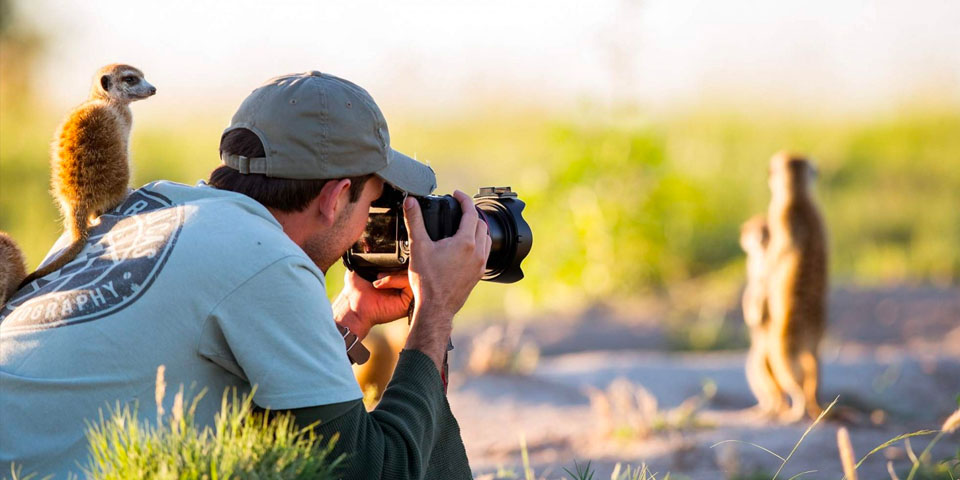
From accurate focus and impressive ISO capabilities to fast shooting speeds and durability, these cameras are designed to excel in the challenging world of wildlife photography.
Whether you opt for a full-frame DSLR or a high-resolution mirrorless body, make sure it suits your budget and can handle the unpredictable nature of wildlife.
Best mid-range camera
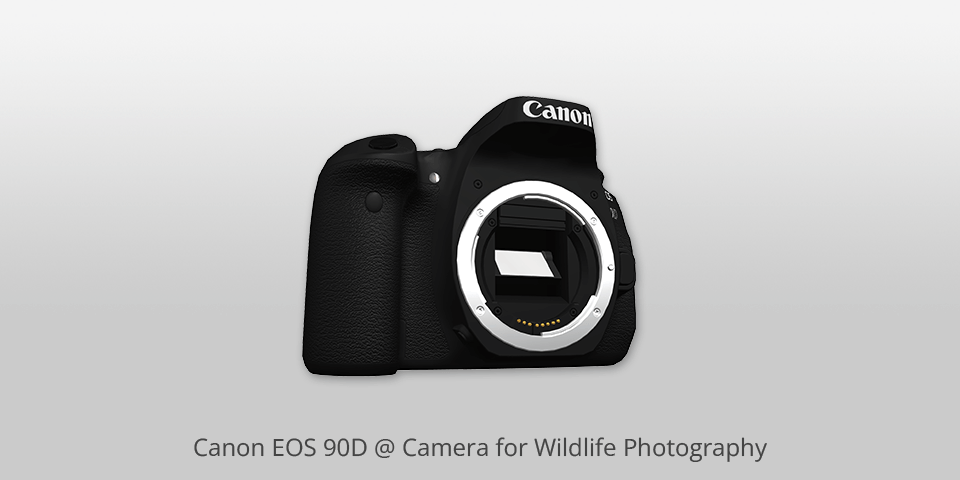
Type: DSLR | Megapixels: 32.5 MP | Video: 4K UHD 30P | Weather-sealing: Yes
Being one of the cheapest Canon cameras, Canon EOS 90D is a fantastic gear with a high burst shooting speed, excellent dynamic range and resolution. It comes with a classic Canon DSLR design with comfortable ergonomics, plenty of physical controls for customization, and great durability, perfect for those demanding outdoor shooting situations.
You can expect superb image quality, even in low light conditions, thanks to its maximum ISO setting of 25,600. Additionally, the autofocus of this wildlife photography camera is impressive, with 315 focus points covering 65% of the image sensor. Plus, it's compatible with a wide range of Canon EF lenses, giving you plenty of options for wildlife photoshoots.
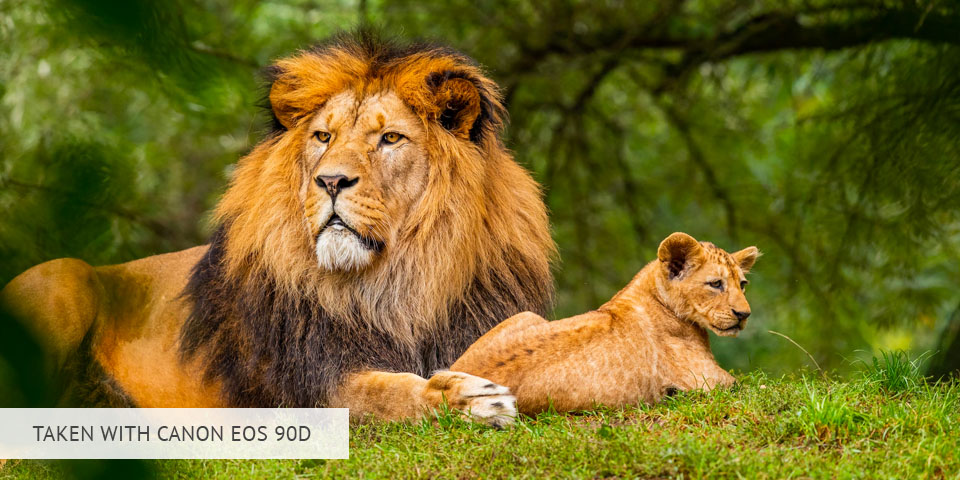
Its fast 10 frames per second continuous shooting speed is ideal for capturing precise moments of action. The camera also has a built-in intervalometer, allowing you to shoot a specified number of images over a specific period of time and create captivating time-lapse movies.
Affordable
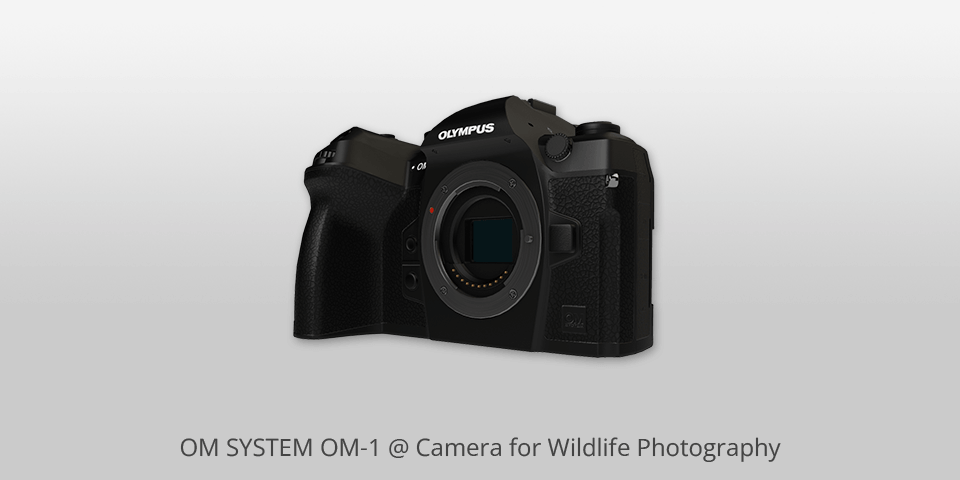
Type: Mirrorless | Megapixels: 20 MP | Video: 4K, 60p | Weather-sealing: Yes
OM SYSTEM OM-1 is one of the best cameras for wildlife photography thanks to its world-class lenses, compact design, and superb battery life. Another advantage is its excellent dynamic range – the native ISO has been improved to 102,400, making it ideal for capturing forest photography in challenging lighting conditions.
The camera boasts some pro-level features, like 50fps blackout-free shooting with autofocus and a rugged build with environmental sealing. Its fast mechanical burst rate allows you to capture a sequence of shots quickly, making it perfect for capturing fast-moving subjects. Additionally, it offers a slow-sync flash mode for shooting with the shortest exposure times.
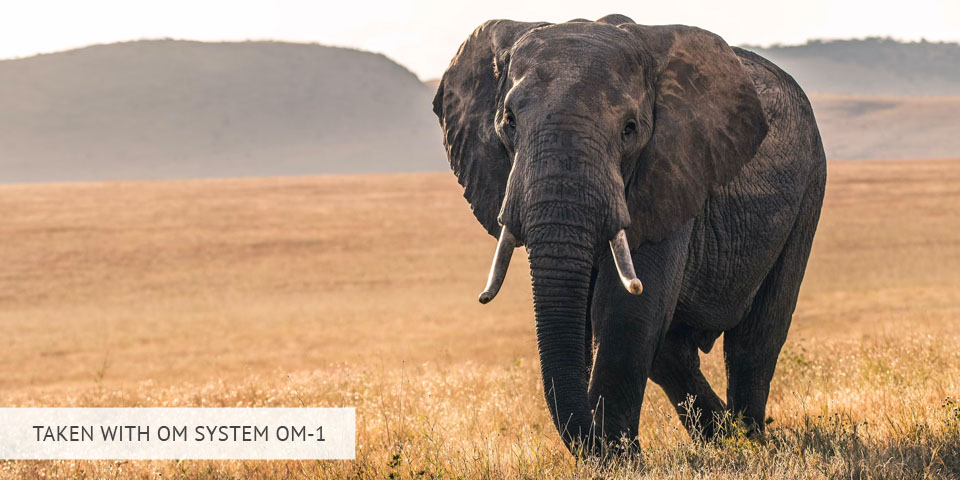
The OM-1 has subject tracking and recognition features, making it easier to capture those fast-moving creatures in wildlife. The continuous autofocus on the OM-1 is pretty impressive, with almost full coverage of the sensor and plenty of focus points to choose from.
Big-grip pro camera
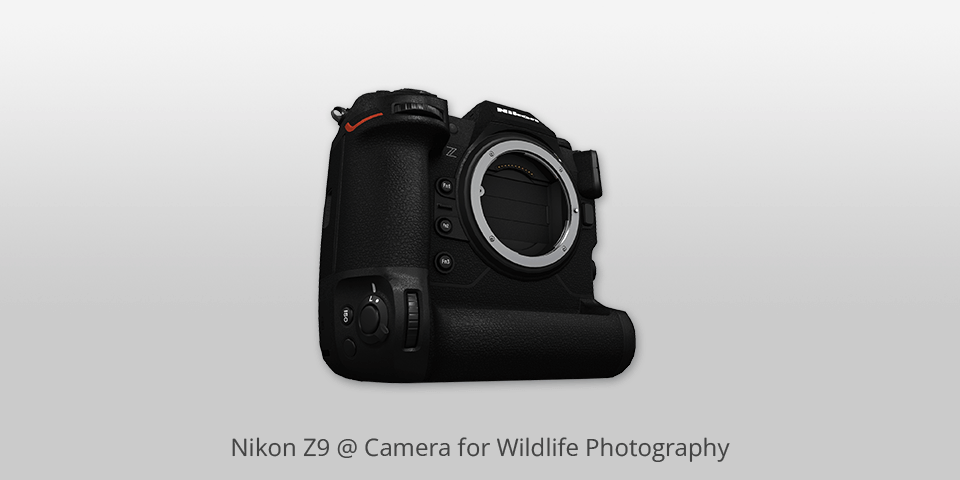
Type: Mirrorless | Megapixels: 45.7 MP | Video: 8K/30p | Weather-sealing: Yes
Nikon Z9 is a powerful camera with blazing-fast frame rates and a pro-level build. It is designed to withstand tough weather conditions, making it ideal wildlife photography camera. It also boasts a high-resolution, large viewfinder, which provides a clear and unobstructed picture without any blackout or delay when the shutter is released.
Its high-speed electronic shutter enables you to capture stunningly sharp images, making it a top choice among Nikon photography cameras. Z9's built-in intervalometer allows for time-lapse photography by shooting a specified number of frames every second. Moreover, the camera's high-speed AF system excels in tracking moving subjects in difficult conditions.

It offers various focus modes, such as the 3D tracking mode for capturing moving subjects and the Eye AF mode for sharp images of animals with their eyes open. Z9 also features a 45.7MP FX-Format Stacked CMOS Sensor and the advanced EXPEED 7 Image Processor, delivering exceptional image quality 8K video resolution.
For professionals
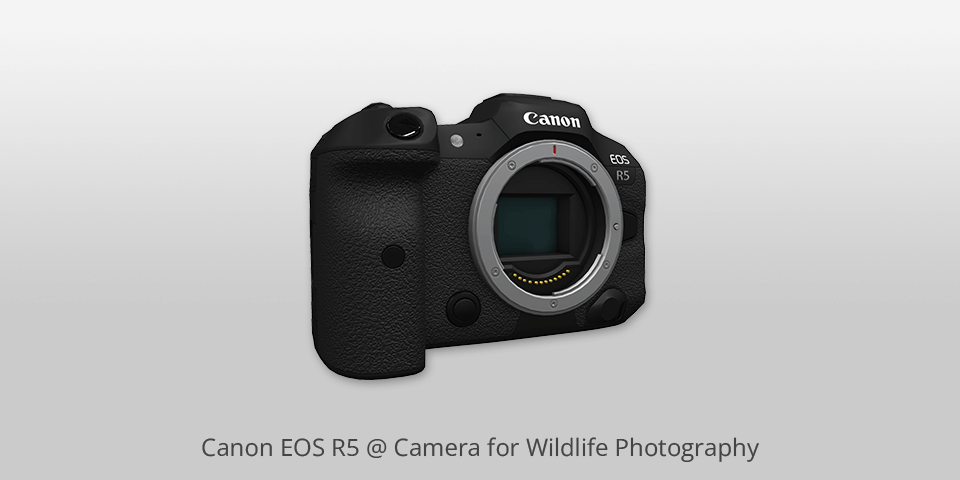
Type: Mirrorless | Megapixels: 45 MP | Video: 8K UHD 4320p | Weather-sealing: Yes
The Canon EOS R5 comes with a game-changing eye-tracking autofocus for animals to capture quick-moving subjects in perfect focus. What’s more, this Canon camera supports the new HEIF 10-bit format, offering even greater image quality than the RAW format. Its 45-megapixel sensor and fast capture speed make the EOS R5 stand out as the best camera for wildlife photography.
The R5 performs exceptionally well in low-light situations with excellent JPEG output and impressive ISO performance. Its second-generation Dual Pixel Auto Focus system covers the entire sensor, allowing for precise tracking of your subjects' eyes.
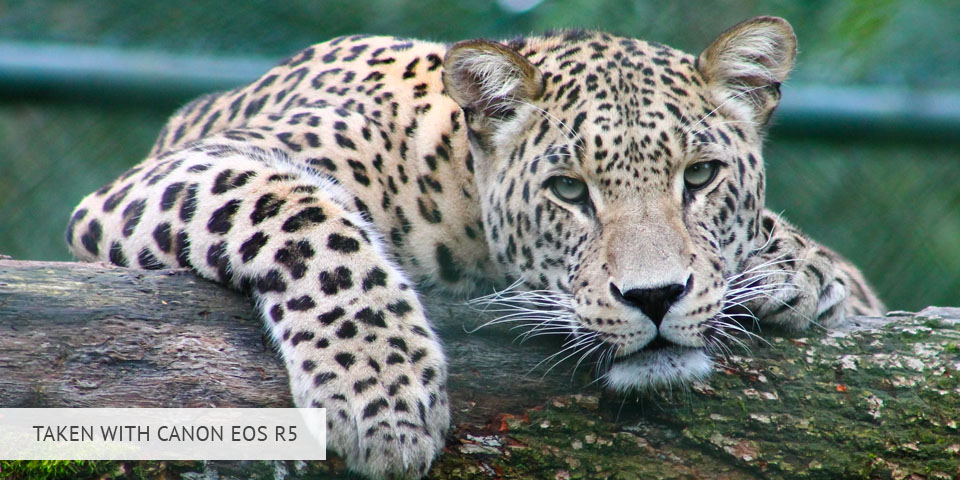
For those challenging lighting situations often encountered in wildlife photography, the built-in ND filter of the Canon EOS R5 comes in handy. It allows you to reduce the amount of light entering the lens, giving you more control over your shutter speed and aperture.
Good noise control
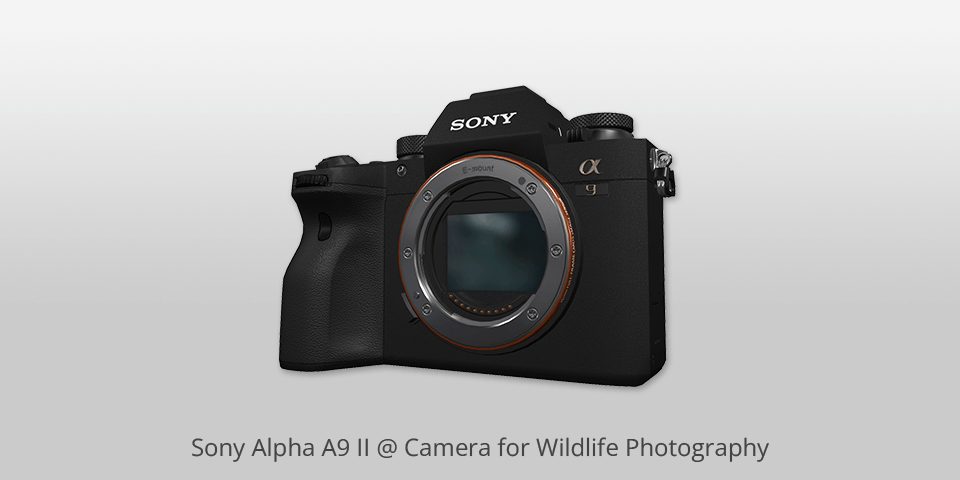
Type: Mirrorless | Megapixels: 24.2 MP | Video: 4K UHD 2160p | Weather-sealing: Yes
Sony Alpha A9 II is the best wildlife camera, boasting a state-of-the-art 24.2 MP Exmor RS CMOS stacked image sensor, which delivers stunning image quality. This mirrorless camera can shoot 20 frames per second continuously, with absolutely no viewfinder blackout and complete silence.
This camera comes with a phenomenal autofocus system and includes Real-Time Eye AF and AF points selection that makes tracking wildlife a breeze. What’s more, it’s packed with AI-based Real-time Tracking that uses subject distance information to prioritize a subject's face and track it, even if it moves in and out of the viewfinder.
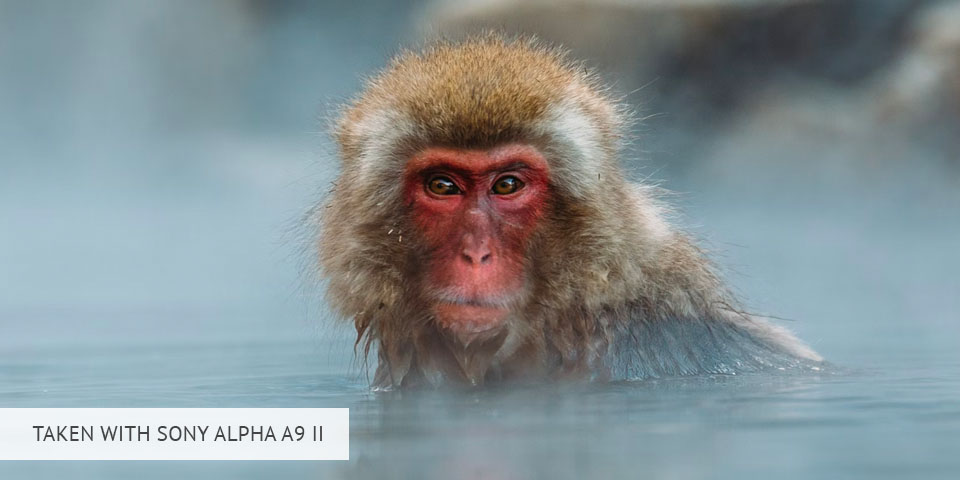
Other useful features of the A9 II include a built-in flash, a USB port, a 3.5mm microphone input, and a large battery, perfect for all-day shooting sessions in the wild. What’s more, it is compatible with a wide range of third-party lenses. As the best wildlife camera, it can also record professional-quality 4K videos.
Best upper mid-range
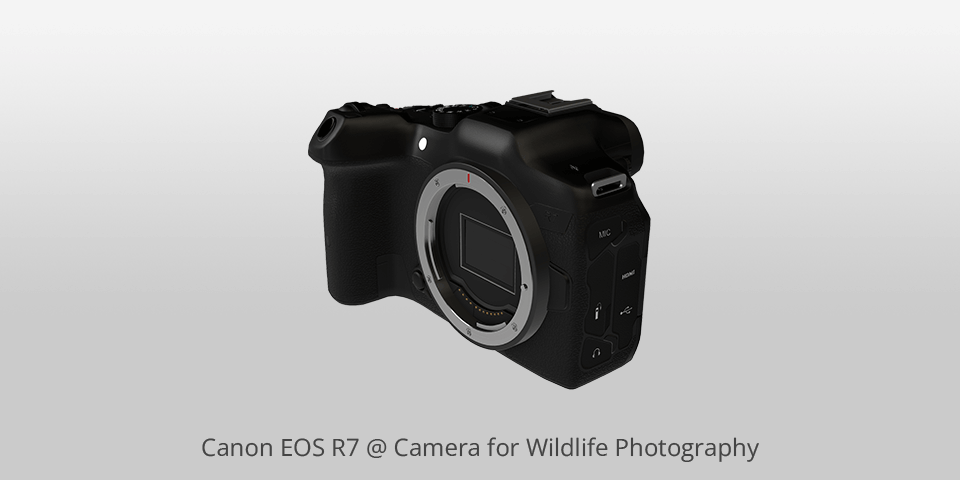
Type: Mirrorless | Megapixels: 32.5 MP | Video: 4K 60p Video | Weather-sealing: Yes
The Canon EOS R7 is a versatile and weather-resistant wildlife photography camera that boasts a high-resolution sensor and fast burst rates, making it an excellent option for capturing fast-action moments. The Dual Pixel CMOS AF system is superlative, providing excellent autofocus capabilities, which can be crucial when comparing Canon vs Nikon.
The image stabilization is top-notch, ensuring sharp and detailed images even in low light. The R7 also has the ability to record HDR images and offers an 'HDR PQ' mode, which records 10-bit video internally with a gamma curve optimized for HDR displays.

One standout feature is its 32MP sensor, which delivers impressive image quality. The autofocus system tracks moving subjects exceptionally well, including faces, eyes, and even animals and vehicles. The rapid maximum burst rate is perfect for capturing fast-action wildlife moments, and the camera can shoot continuously for over two hours.
Best bridge camera
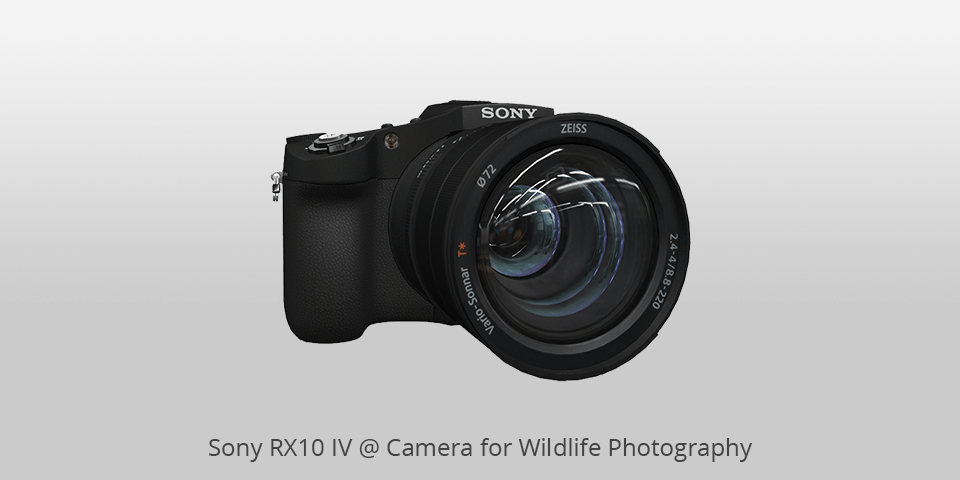
Type: DSLR | Megapixels: 20 MP | Video: 4K6 (QFHD) | Weather-sealing: Yes
Despite being a bridge camera, the Sony RX10 IV is considered one of the best cameras for wildlife photography in the right conditions. The camera features a 20-megapixel 1-inch image sensor, which produces high-quality images with impressive dynamic range and color rendition.
It uses a phase-detect autofocus system with 315 focus points, covering 65 percent of the image sensor's surface area, ensuring precise subject tracking even in varying light conditions. Sony cameras are known for their high shutter speed, which is crucial for capturing crisp and clear images without any noticeable blur.
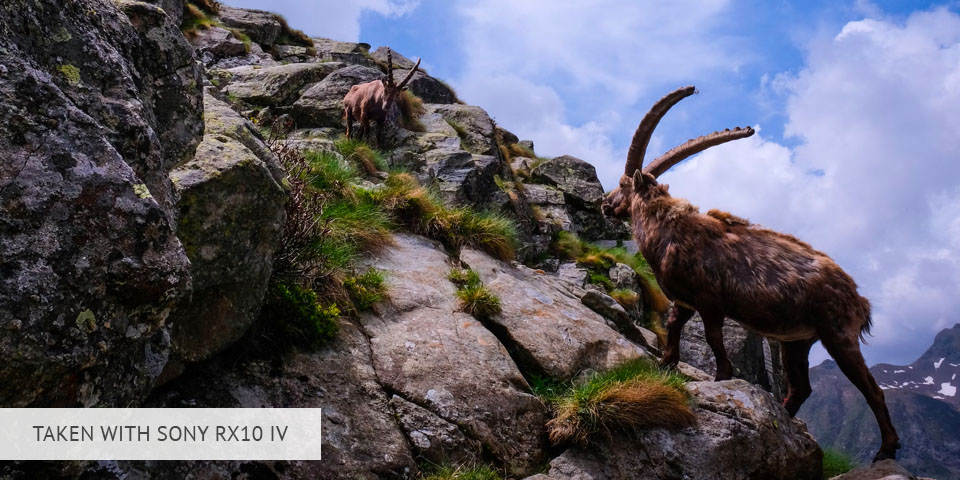
The RX10 IV also offers both an eye-level electronic viewfinder and a tilting rear screen, providing impressive clarity and easy composition of shots. The electronic viewfinder, in particular, is bright and clear, almost on par with the best full-frame DSLRs. It also offers a shortened reaction time, beneficial for continuous shooting, a feature that wildlife photographers greatly appreciate.
Weather-sealed body

Type: Mirrorless | Megapixels: 24.2 MP | Video: 6K | Weather-sealing: Yes
The Canon EOS R6 II is a great camera ideal for wildlife photography that boasts impressive autofocus performance and a quite fast burst rate, allowing you to capture those action-packed moments with ease. This full-frame camera comes with a 24.2-megapixel sensor, allowing for excellent image quality, even in low-light conditions.
The R6 II also comes equipped with a DIGIC X image processor, allowing you to capture sharp, high-resolution images with minimal noise. Speaking about autofocus system, it combines traditional phase detection with digital continuous tracking to ensure your subject stays in focus even in motion.
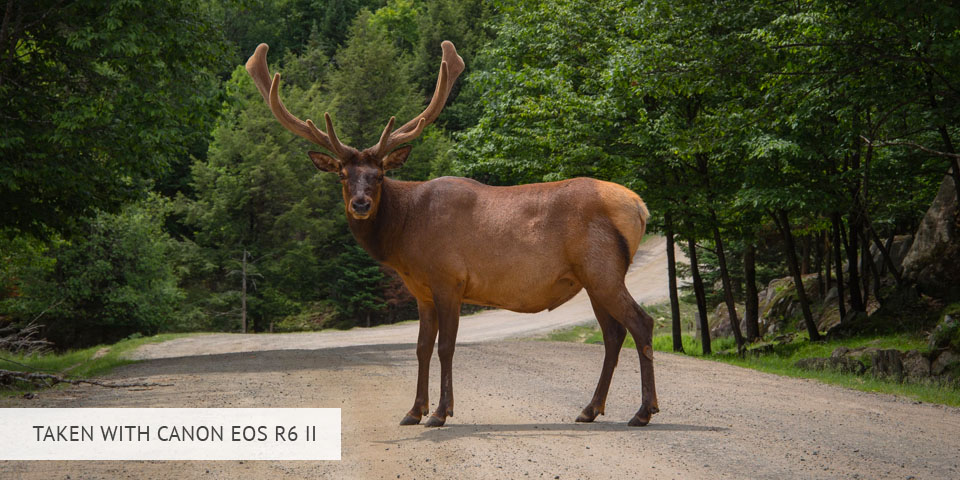
The EOS R6 II can record high frame rates, allowing you to capture fast action scenes. To complement your wildlife photography, consider investing in sturdy tripods for wildlife photography, providing stability and allowing for precise composition.
For enthusiasts
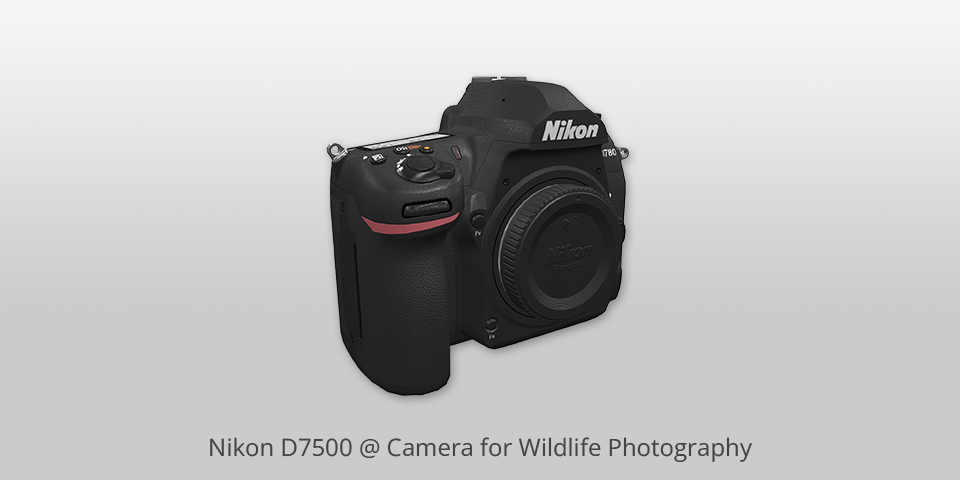
Type: DSLR | Megapixels: 20.9 MP | Video: 4K UHD 2160p | Weather-sealing: Yes
The Nikon D7500 boasts a swift autofocus system with 51 focus points, including 15 cross-type ones. It comes in lightweight and easy-to-carry body with impressive battery life, allowing you to capture up to 950 frames per charge, making it one of the best cameras for wildlife photography.
Notably, this DSLR camera features a large sensor with high resolution, enabling sharp captures of moving subjects. The group-area AF mode is a game-changer for wildlife photography, tracking multiple targets simultaneously.
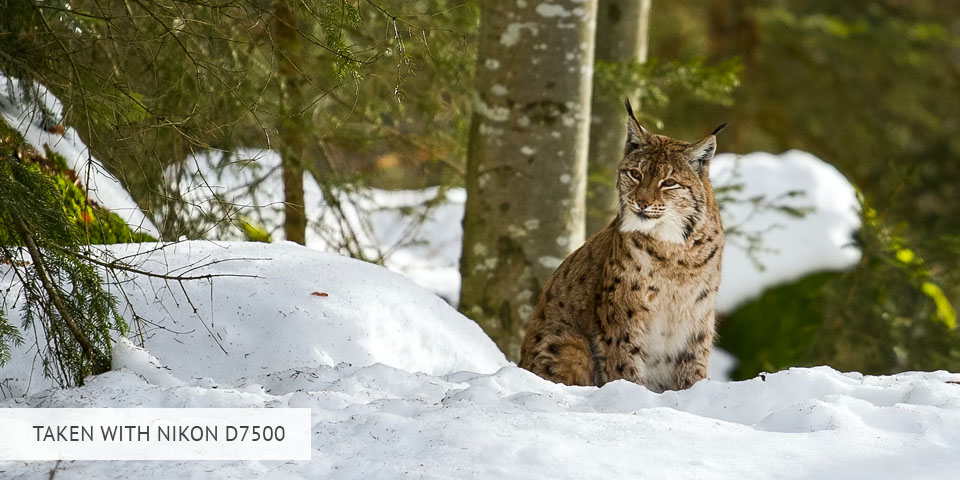
Powered by the Expeed 5 image-processing engine, it excels in low-light conditions, giving you the freedom to shoot in challenging lighting scenarios. Additionally, the D7500 offers high shutter speed and ISO capabilities, allowing shooting at 8 fps.
Perfect for macro
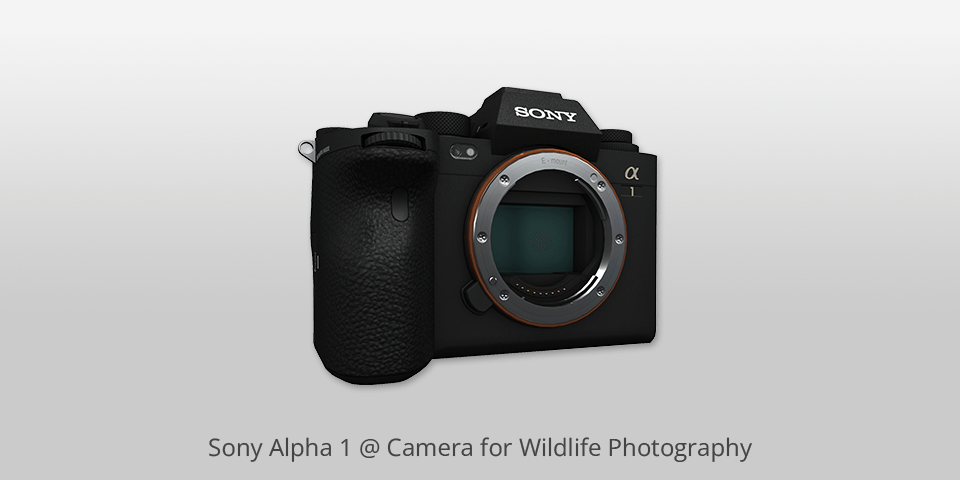
Type: Mirrorless | Megapixels: 50.1 MP | Video: 8K | Weather-sealing: Yes
The Sony Alpha 1 is considered one of the best wildlife cameras, boasting incredible speed and accuracy when it comes to tracking moving subjects. The high-resolution image capture at 30fps is simply mind-blowing and ensures that you don't miss any details.
Alpha 1's eye-tracking ability is a game-changer for wildlife shootings, as it can recognize and track human, animal, and bird eyes, allowing for exceptional shots in the wild. With its powerful 51-point AF system with 15 cross-type points and a dynamic-area AF option, the Alpha 1 offers versatile and precise autofocus capabilities.

The Sony Alpha 1 is also a great choice for your macro photography ideas with its high-resolution sensor and pixel shift function, that is useful when capturing small birds or insects in their natural environments.
Smart tracking AF
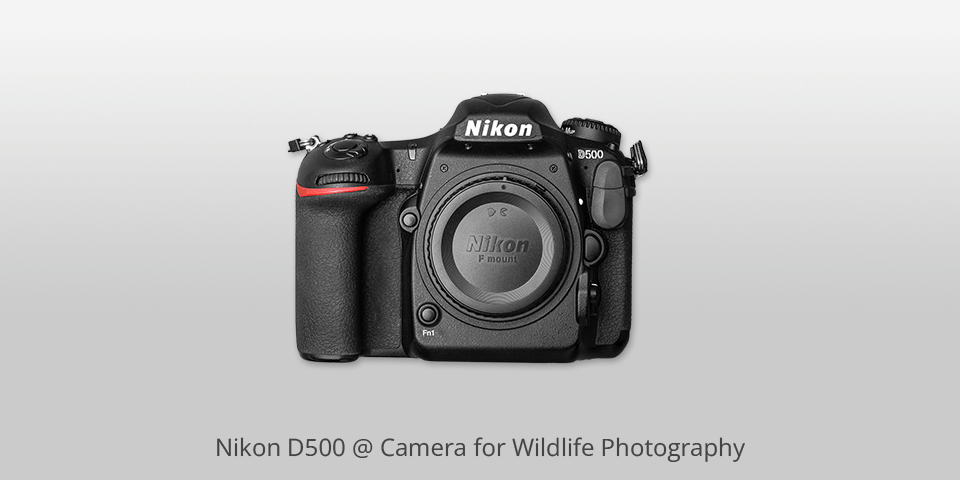
Type: DSLR | Megapixels: 20.9 MP | Video: 4k UHD | Weather-sealing: Yes
The Nikon D500 ticks all the boxes for a robust wildlife photography camera. Its autofocus speed is incredibly fast, allowing you to capture those fleeting moments with precision. The camera also boasts a high resolution, delivering detailed images, even in challenging lighting conditions.
One of the standout features of the D500 is its DX-format sensor, which provides a 1.5x crop factor, bringing distant wildlife subjects closer. The 51-point autofocus system, compatible with various lenses for wildlife photography, is highly accurate and tracks subjects with impressive speed.
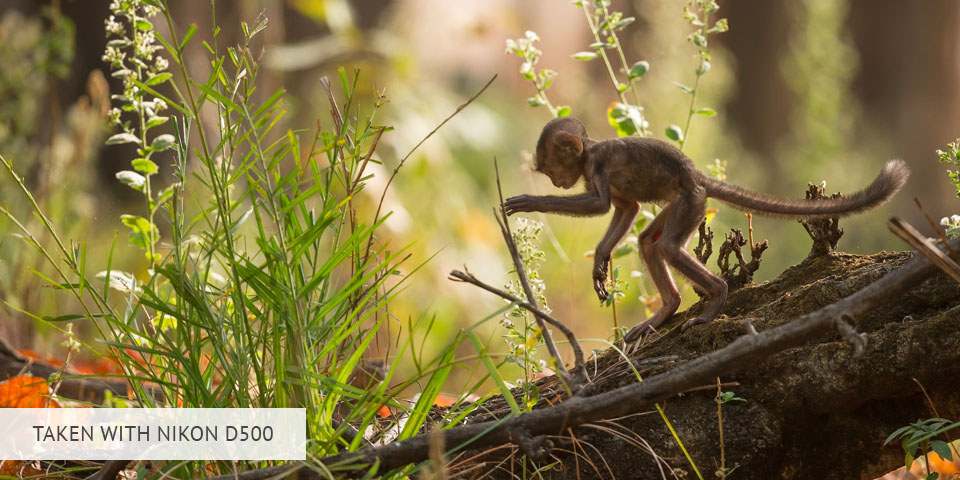
It is compatible with telephoto lenses and teleconverters, giving you flexibility in your gear choices. The ability to set the AF point selection to a specific area of the image sensor is a particularly attractive feature for wildlife photographers.
Budget-friendly
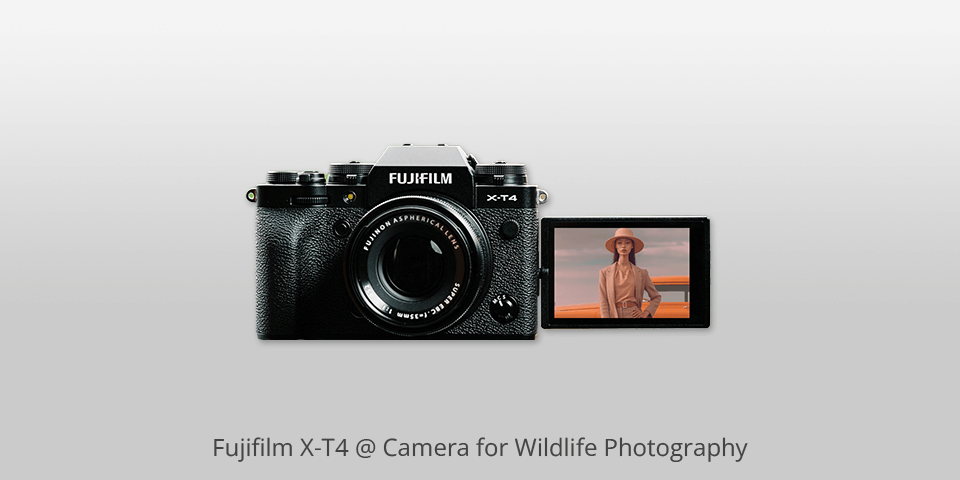
Type: Mirrorless | Megapixels: 26.1 MP | Video: Full HD 240p | Weather-sealing: Yes
The Fujifilm X-T4 is one of the best cameras for wildlife photography fitted with a large sensorThe Fujifilm X-T4 is one of the best cameras for wildlife photography fitted with a large sensor, allowing you to capture those fine feathers and fur in stunning clarity. The color reproduction is accurate and vibrant, making your wildlife shots truly come to life., allowing you to capture those fine feathers and fur in stunning clarity. The color reproduction is accurate and vibrant, making your wildlife shots truly come to life.
The autofocus system of the X-T4 with 315 focus points covering a significant portion of the image sensor can accurately track fast-moving subjects. What’s more, this Fujifilm camera can focus on subjects hiding behind foreground obstacles.
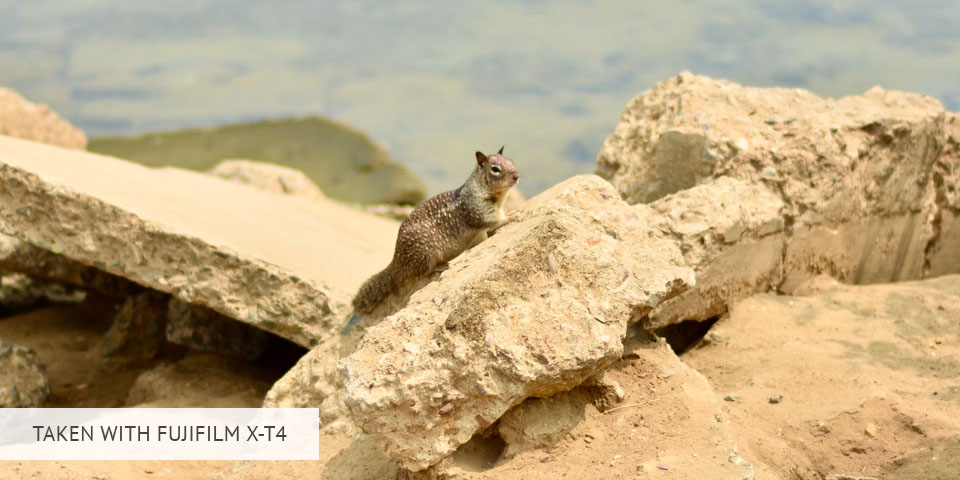
Another advantage is high-resolution RAW shooting with an impressive ISO range of up to 50000. This gives you the freedom to experiment with image quality and adjust factors like contrast, sharpness, and saturation to your liking.
Highly weatherproof
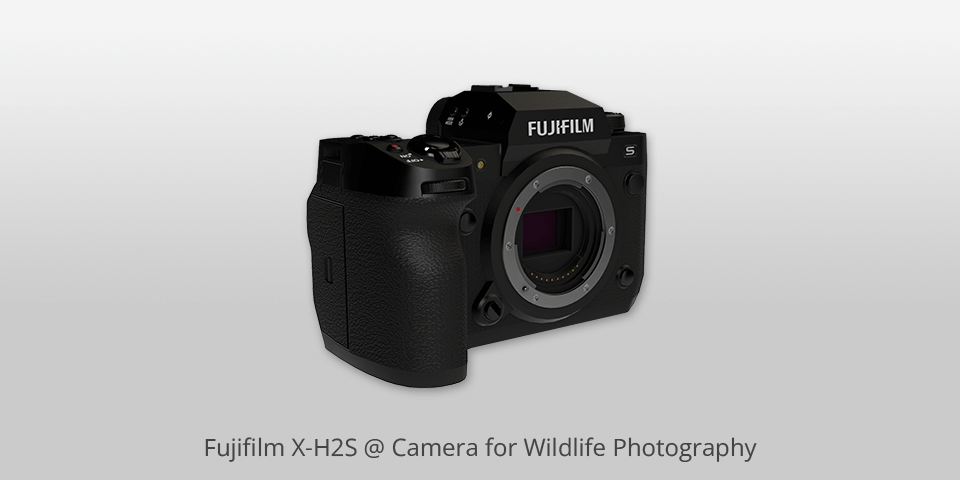
Type: Mirrorless | Megapixels: 32.5 MP | Video: 4K 120P | Weather-sealing: Yes
The Fujifilm X-H2S has an incredibly high maximum continuous shooting speed, which is perfect for capturing fast-moving wildlife. It also has some impressive video specs, recording in 6.2K at 30fps and 4K at 120fps, allowing for stunning video quality.
Its smarter autofocus system allows for subject tracking, eye/face detection, and more, providing accurate and reliable focus. The autofocus system also includes animal eye tracking and vehicle detection. This subject-detection technology has been developed using machine learning, resulting in improved tracking performance.
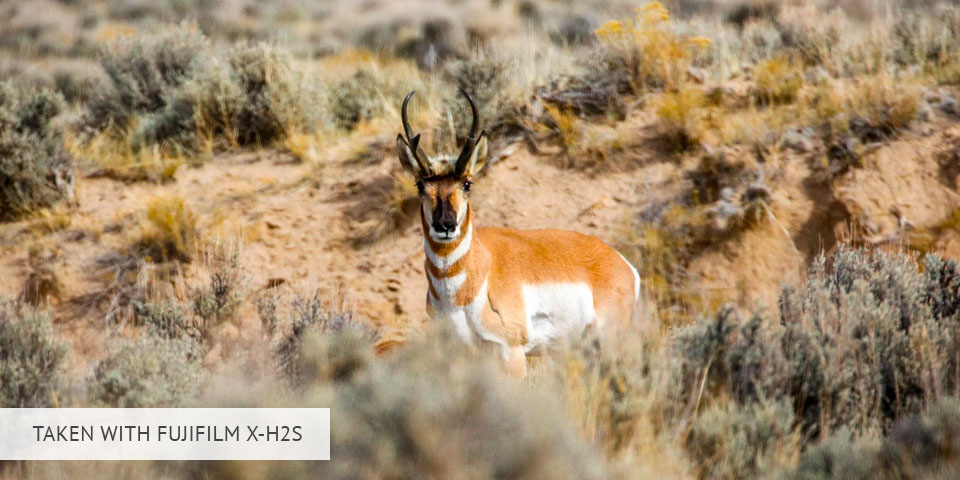
The X-H2S's stacked sensor, a game-changer for the best wildlife cameras, allows for shooting up to 40fps with continuous autofocus, without any blackout in the viewfinder. Other useful features include twin card slots for CF Express and UHS-II SD, the optional cooling fan, a headphone jack, and a USB 3.2 Gen 2 Type C port for file transfer, tethering, and charging.
Versatile
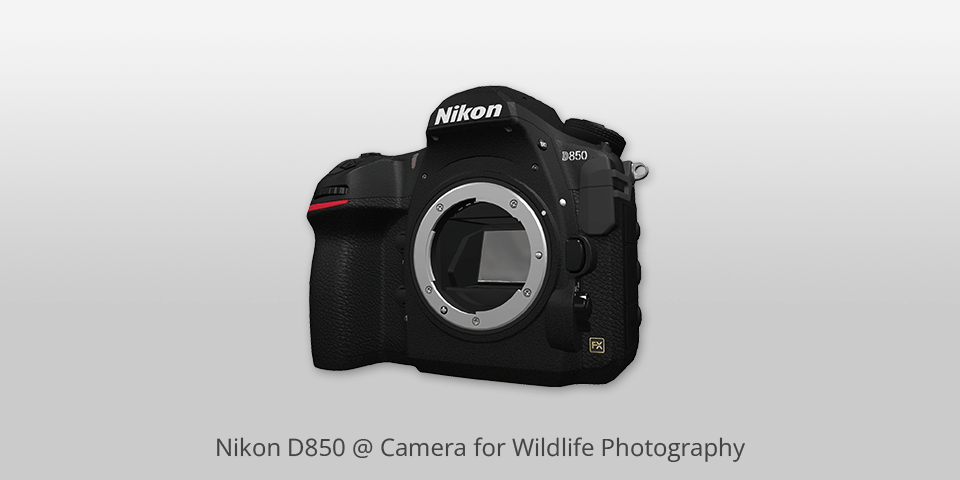
Type: DSLR | Megapixels: 45.7 MP | Video: 4K Ultra HD | Weather-sealing: Yes
The main highlight of the Nikon D850 is its stunning image quality and exceptional performance. With its backside illuminated 45.7-megapixel sensor and no optical low-pass filter, it delivers incredibly detailed photos, making it an ideal camera for macro photography.
Its top-notch autofocus system ensures that you never miss a shot and, and the focus shift function will come in handy for macro shooting. Its high resolution and excellent dynamic range ensure that you capture stunningly detailed photos, with the ability to capture both bright and dark areas of the image. Moreover, the large image sensor provides more flexibility in low-light conditions.
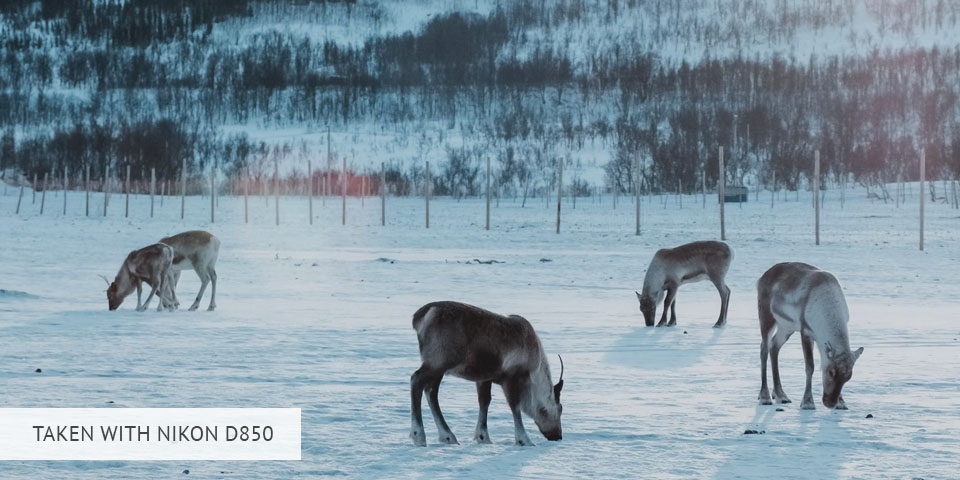
As one of the best cameras for wildlife photography, the D850 has some additional features that come in handy. For instance, the ability to use a remote control and off-camera flash sync mode allows for uninterrupted shooting without disturbing your subjects. The built-in intervalometer is perfect for capturing stunning time-lapse sequences.
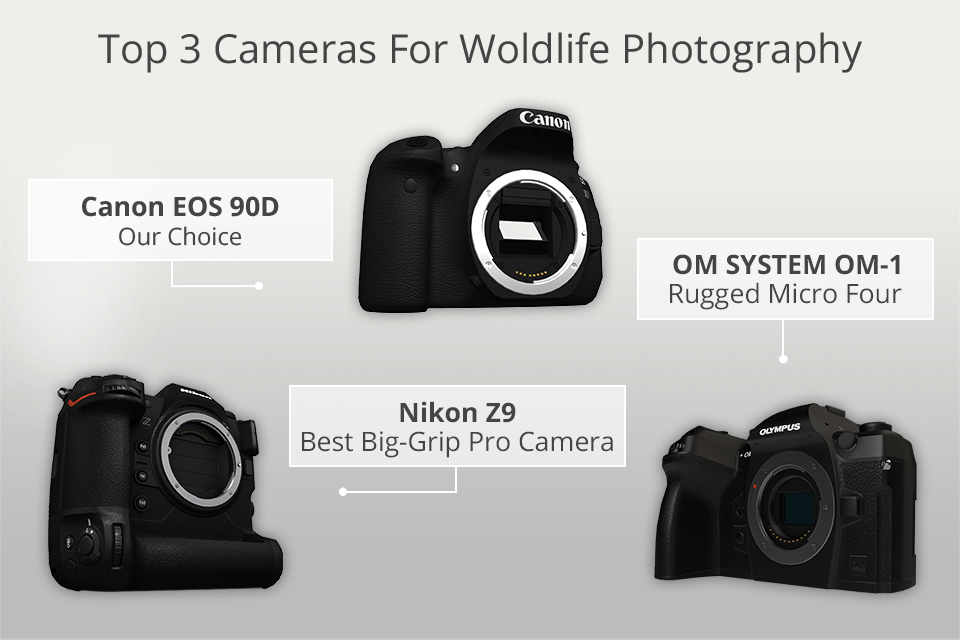
When it comes to choosing the best wildlife camera, there are a few key characteristics that truly matter.
Autofocus system. Wildlife is unpredictable, and you never know when a fleeting moment will present itself. That's why a camera with a large number of autofocus points and a high frame rate is crucial for wildlife photographers. It allows you to quickly focus and track those elusive creatures, ensuring you capture every detail.
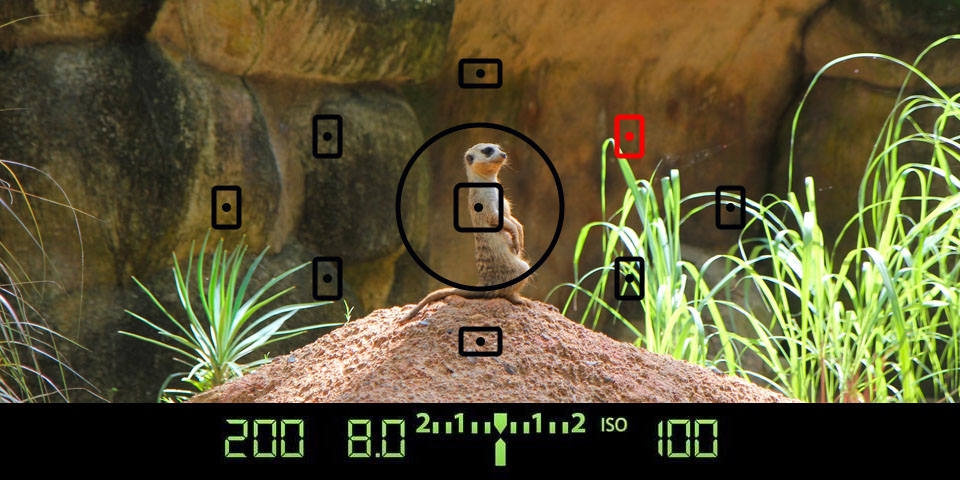
ISO. Wildlife photography often takes place in challenging lighting conditions. To capture the beauty of these moments, you need a camera with impressive ISO capabilities. Increasing the ISO sensitivity allows the camera to capture more light in low-light conditions, resulting in clear and high-quality images.
Durability. Reliable cameras for wildlife photography are built to withstand tough field conditions and frequent travel. They are rugged and weather-sealed, ensuring they can handle the challenges of shooting in remote and unpredictable environments.
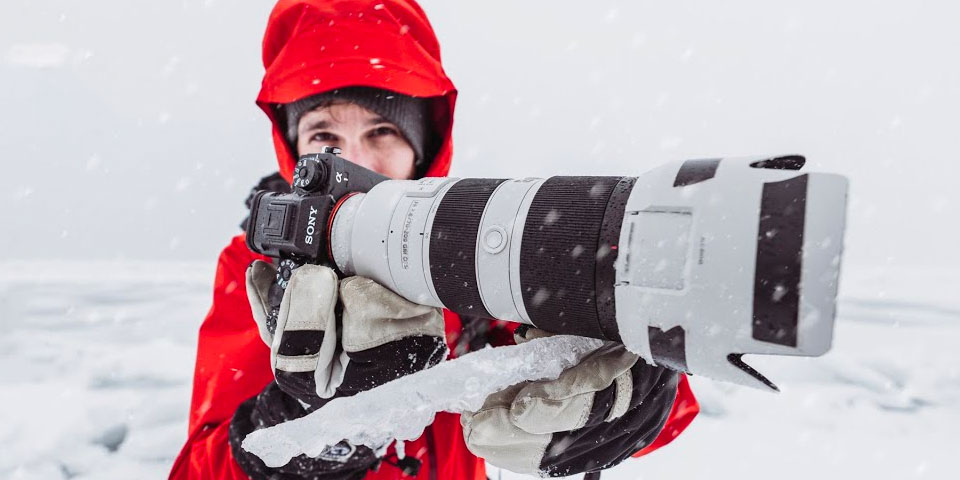
Fast continuous shooting speed. This allows you to capture multiple frames in a short span of time, ensuring you don't miss any crucial moments. Whether it's a lion pouncing or a hummingbird in flight, having a camera that can shoot rapidly will help you capture those split-second moments.
Compatibility with teleconverters. Sometimes, wildlife subjects are too far away to capture with a standard lens. Teleconverters allow you to magnify the subject, bringing it closer without compromising image quality. This compatibility gives you the flexibility to capture distant subjects with detail and clarity.
